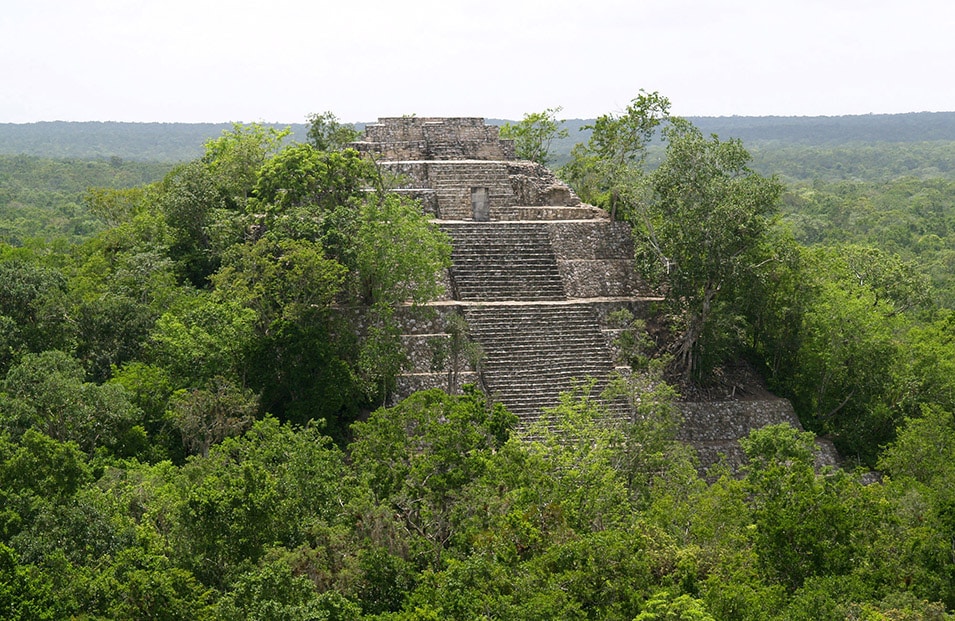Calakmul: A Fortress Hidden in the Jungle

A UNESCO World Heritage site of 27 square miles and over six thousand structures, Calakmul can’t be seen in its entirety in a single day. It takes several to cover all its structures, sites, and wonders of engineering. Because of that, this is the main attraction for global archeological enthusiasts.
Calakmul’s conflictive past
Calakmul’s relationship with Tikal, only 22 miles away, on the other side of the Guatemalan border, seems to have been competitive, to put it mildly. Both have huge structures and are similar in size. Of course, it was far from friendly, as they faced each other in battle more than once.
The most powerful city in the area, its Calakmul was home to over 50,000 inhabitants who occupied 6,700 structures—more than any other Mayan settlement in the region. Humans weren’t the only creatures who called this place home, though. Monkeys and a couple hundred species of birds inhabit Calakmul to this day.
Calakmul’s impressive pyramid
Yes, Calakmul’s pyramid— called structure 2—is huge, but let’s forget about sheer size for a moment. What’s most impressive about it is its relationship with the surrounding jungle. It really looks like someone just placed it among the heavy foliage the day before; something Indiana Jones would find in one of his fantastic expeditions.
Ok, now we can talk about size. At over 148 feet, it’s one of the tallest of the great Mayan pyramids. However, with a base almost 400 feet long, it’s certainly the largest. With these dimensions, anything we say about the view from the top will fall short.
Other impressive features
As this place had to sustain tens of thousands, expect to see examples of that astonishing Mayan engineering. Calakmul holds an extensive system of water reservoirs and canals. Over eight scabes (those white Mayan roads) connect the city to the neighboring settlements, some of which are tens of miles away.
If you need to brush up on your history, there’s also a museum on-site that covers the ruins and biosphere. Though, admittedly, that wasn’t built by the Mayans.
